Hello dear Travelers and Hivers ! Today, I'll meet you in this private hotel in the Marais district, which may be home to scenes from another time, but which are still interesting to put into perspective with what the world is going through, particularly with regard to our relationship with Nature.
Let me explain a little more about my questions and feelings on the subject of hunting and, in general, the death of animals at the hands of man. Even if it may shock some people, I have no illusions, except for trees and plants, the vast majority of living beings live on the death of others and in turn, their disappearance will generate new life. Nothing comes from nothing. I find the position of some people hypocritical at times, whether they eat meat or not.
On the other hand, I don't particularly like hunting when you don't consume the flesh of the animals you have killed. Death is not a game and I rather disapprove of the fact that some people might consider it a feat of strength. To conclude, I think it is always interesting to see how things in history unfold. I don't agree with the "woke" movement and who wants to cancel things or events. For me this is the best way to make the said events happen again and again.
So much for this little series of clarifications concerning my general position on this subject. Having said that, let's start our visit !
Here is a view of the mansion from the top floor... Of course, this is not where our tour starts ^^ !
Here we are in the first of the rooms. I don't think I've said this before but this is the first time I've visited this museum since I've been in Paris. It's quite strange in itself as it's in a central area where I go quite often. So I discovered this museum very recently.
Here, the room seems to be obviously dedicated to dogs and their representations which are obvious actors of hunting in the world and in Europe in particular.
In the next room, we come across a polar bear standing on its two hind legs with its head more than 2.5 meters above the ground. The stuffed animal is surrounded by fragile stuffed birds which are placed in glass cases.
We now continue our journey with the birds of prey used as allies in the hunting of small and fairly small animals such as badgers, weasels and sometimes foxes. We therefore find a series of objects and elements linked to this activity.
Among these attributes of the falcons are the little bells that are attached to their legs and the little caps that are placed on their heads.
In the same showcase - darkened and therefore difficult to photograph - there are two small representations of birds being chased by other birds of prey. The painter is the Dutchman Pieter Snyers, whose touch and realism I really like in each of his paintings.
Let's move on to the small room dedicated to the wolf. This one is almost as small as the falcon room and I find it surprising that there is not more historical material such as traps and the like, as this animal is so symbolic because of the struggle that opposed it to human desires. In the end, I think the opposition between the two species comes from the proximity between their needs and ultimately their prey such as farm animals.
At the end of this room, there is a stuffed wolf next to a rather interesting contemporary work made of feathers. Sorry for the distance, but the reflections were important when closer !
As you will have understood, we are now entering the room dedicated to another extremely important and symbolic animal for hunting in Europe.
There is this kind of box that offers a presentation of the general and physiological characteristics of the animal. There are also a few objects, but these - like this little bronze deer from Germany.
I don't really learn much, but it's the atmosphere that I came for and I'm not disappointed !
In a tiny adjoining room, there is a small room dedicated to the legendary unicorns. The few objects on display are interesting, but unfortunately, apart from this trunk in an elephant's tusk, the rest is not very well displayed or illuminated.
On the ceiling, there is also this installation of deer antlers with the rather comical presence of a smoke detector that almost seems to be part of the whole.
Without surprise, but with a change of atmosphere, we arrive in the room dedicated to the boar.
Here too we are in the presence of a very common hunting animal that has been part of the legends of various European nations for thousands of years.
I think that's why you find all these different flints cut with the stakes that were used for his traditional hunting. I'll leave you to imagine, but of all the practices, this one must have been the bloodiest and I wouldn't take part in it for anything !
In a corridor where there seems to be nothing to look at, if you bend down a little you can admire these three beautifully crafted stained glass windows depicting hunting scenes. I would have liked to have the date of the period of realization...
A chandelier that looks like a moon decorated with deer antlers...
We are now in the blue room, which is devoted to the paintings of François Desportes, a French painter who specialized in 17th century animal paintings.
Of all the artworks present, I liked the ones with the birds above the doors the most.
There we were in the red room, I did not really pay attention to the painter so much I was captivated by this feline fight !
This was one of the last rooms in this wing of the mansion, more focused on hunting and its representations, but let's go to perhaps the most famous room in this museum...
This is the room reserved for hunting trophies and I have to say that even if I can't help but find it morbid, it's quite fascinating to see the diversity of species represented in the same room ! Weapons also interest me by their profusion even if I'm not really a gun person... More like an archer in my opinion :))
There is a mixture of horned animals, felines and even a rhinoceros whose horns were stolen a few years ago and replaced with golden copies.
A yak, a bison, antelopes, wildebeests, mouflons, all brought back from the four corners of the world by adventurous hunters of the last centuries.
That's not so great, but there is even a stuffed elephant. I find it even more difficult to associate this with a trophy when you know how many specimens are left on Earth !
And there is even an albino wild boar !
We will finish with this pair of jaguars - but perhaps are they leopards ? - in their showcase. Without telling you more, I didn't show you everything in this museum because some rooms and what they contain clearly deserve an article on their own. So you can expect a few more shares in the coming days :)
I hope you have enjoyed this article and that for some of you, you have managed to get past the obvious morbidity of such a place to put it into perspective with our times and just enjoy the atmosphere.
I thank you for your visit and your time reading, and if you are a hunter (or not) don't hesitate to bring your insights !
Have a great day and see you soon,
<3
Obviously, no AI in this article !
Thank you also for taking into account that all these images which are mine were taken by me with a Nikon D5500 and a Sigma 17-70mm lens.
Bonjour chers Voyageurs et Hivers ! Aujourd'hui, je vous donne rendez-vous dans cet hôtel particulier du quartier du Marais qui accueille des scènes d'un autre temps peut-être, mais qui restent toujours intéressantes à remettre en perspective avec ce que le monde traverse et notamment vis à vis de nos relations avec la Nature.
Laissez-moi expliquer un peu plus mes questionnements et ressentis quand à ce sujet de la chasse et en général celui de la mort des animaux par la main de l'homme. Quitte à en choquer certains, je ne me fait pas d'illusions, excepté les arbres et les végétaux, une grande majorité des êtres vivants vivent de la mort des autres et à leur tour, leur disparition engendrera de nouvelles vies. Rien de vient de rien. Je trouve que la position de certains est parfois hypocrites, qu'ils mangent de la viande ou non.
D'un autre côté, je n'aime pas particulièrement la chasse lorsque l'on ne consomme pas la chair des animaux que l'on a tué. La mort n'est un jeu et réprouve assez que certains puissent considérer cela comme un tour de force. Pour conclure, je pense qu'il est toujours intéressant de constater la manière dont les choses dans l'histoire. Je ne suis pas d'accord avec la mouvance "woke" et qui veut cancel des choses ou des événements. Pour moi c'est la meilleure manière pour que les dits événements se reproduisent ainsi à l'infini.
Voilà pour cette petite série de précision concernant ma position générale sur ce sujet. Ceci étant dit, commençons notre visite !
Voilà une vue de l'hôtel particulier depuis le dernier étage... Bien-sûr, ce n'est pas par là que commence notre tour ^^ !
Nous voilà dans la première des salles. Je ne crois pas l'avoir déjà dit mais c'est la première fois que je visite ce musée depuis que je suis à Paris. C'est assez étrange en soit comme celui-ci est dans un quartier central et où je me rends plutôt souvent. J'ai donc découvert ce musée tout récemment.
Ici, la salle semble de façon évidente être dédiée aux chiens et à leurs représentations qui sont des acteurs évidents de la chasse dans le monde et en Europe tout particulièrement.
Juste dans la salle voisine, on tombe face à une ours polaire dressé sur ses deux pattes arrières et dont la tête culmine à plus de 2 mètres cinquante du sol. L'animal empaillé est entouré de fragiles oiseaux eux-aussi empaillés et qui sont placés dans des vitrines.
On continue notre parcours désormais avec les oiseaux de proie utilisés comme alliés de la chasse aux petits et assez petits animaux tels que les blaireaux, les belettes et parfois les renards. On retrouve donc une série d'objets et d'éléments liés à cette activité.
Parmi ces attributs des faucons, on retrouve notamment les petits grelots qui été fixés à leur pattes ainsi que les petits capuchons que l'on placent sur leurs têtes.
Dans la même vitrine - plongée dans l'obscurité et donc difficile à photographier - on retrouve deux petites représentations d'oiseaux chassés par d'autres oiseaux de proie. Le peintre est le Hollandais Pieter Snyers dont j'aime beaucoup la touche et le réalisme dans chacun de ses tableaux.
Passons dès lors à la petite salle dédié au loup. Celle-ci est presque aussi petite que celle des faucons et je trouve étonnant que l'on n'y trouve pas plus de matériaux historiques comme des pièges ou autres, tant cet animal est symbolique du fait de la lutte qui l'a opposé aux désirs des humains. Au final, je pense que l'opposition entre les deux espèces vient de la proximité entre leurs besoins et finalement leurs proies comme les animaux d'élevage.
À la sortie de cette salle, on trouve tout de même un loup empaillé à côté d'une oeuvre contemporaine assez intéressante toute réalisée en plumes. Désolé pour la distance, mais les reflets étaient important en étant plus près !
Comme vous l'aurez compris, nous pénétrons désormais dans la pièce dédié à un autre animal extrêmement important et symbolique pour la chasse en Europe.
On retrouve cette sorte de coffret qui offre un exposé des caractéristiques générales et physiologiques de l'animal. Il y a aussi quelques objets, mais ceux-ci - comme cette petite biche en bronze venue d'Allemagne.
Je n'apprends pas énormément de choses en vérité, mais c'est surtout l'ambiance que je suis venue chercher et pour le coup, je ne suis pas déçu !
Dans une minuscule salle attenante, on trouve un réduit qui est consacré à ces animaux légendaires que sont les licornes. Les quelques objets présentés sont intéressants, malheureusement, hormis cette trompe d'appel dans une défense d'éléphant, le reste n'est pas très bien exposé ou mis en lumière.
Au plafond, on trouve aussi cette installation de bois de cerfs avec la présence assez cocasse d'un détecteur de fumée qui semble presque faire partie de l'ensemble.
Sans surprise, mais avec tout de même un changement d'ambiance, nous arrivons dans la pièce dédiée au sanglier.
Là aussi on est en présence d'un animal très commun de la chasse et qui peuple les légendes des différentes nations européennes depuis des millénaires.
Je pense que c'est pourquoi on trouve tous ces différents silex taillés avec les épieux qui étaient utilisés pour sa chasse traditionnelle. Je vous laisse imaginer, mais de toutes les pratiques, celle-ci devait être la plus sanglante et je n'y participerai pour rien au monde !
Dans un couloir où il ne semble n'y avoir rien a observer, en se baissant un tout petit peu on peu admirer ces trois vitraux magnifiquement ouvragés et qui représentent des scènes de chasses. J'aurais tout de même bien aimé avoir la datation de la période de réalisation...
Un lustre qui ressemble à une lune ornée de bois de cerfs...
Et nous voilà désormais dans le salon bleu qui est consacré aux tableaux de François Desportes, peintre français, spécialisé dans la peinture animalière du XVIIème siècle.
De toutes les oeuvres présentes, c'est surtout ceux avec les oiseaux qui étaient placés au dessus des portes qui m'ont le plus plût.
Là nous étions dans le salon rouge, je n'ai pas vraiment fait attention au peintre tant j'étais captivé par cette bagarre féline !
Ici c'était une des derniers salons de cette aile de l'hôtel particulier, davantage centré sur la chasse à courre et ses représentations, mais rendons-nous dans la salle peut-être la plus connue de ce musée...
C'est la pièce réservée aux trophées de chasse et je dois dire que même si je ne peux m'empêcher de trouver cela à la fois morbide, c'est assez fascinant de voir la diversité d'espèces représentées dans une seule et même pièce ! Les armes m'intéressent aussi par leur profusion même si je ne dois pas être très arme à feu en soit... Plutôt style archer à mon avis :))
Là sont mélangés bêtes à cornes, félins et même un rhinocéros dont les cornes volées il y a quelques années ont été remplacées par des copies dorées.
Un yak, un bison, des antilopes, des gnous, des mouflons, tous venants des quatre coins du monde rapportés par des chasseurs aventuriers des siècles derniers.
Ça c'est moins reluisant, mais on trouve même un éléphanteau empaillé. Je trouve que quand on sait la quantité de spécimens restants sur Terre, c'est encore plus difficile d'associer cela à un trophée !
Et il y a même un sanglier albinos !
Nous terminerons par ce couple de jaguars - mais peut-être s'agit-il de léopards ? - dans leur vitrine. Sans vous en dire davantage, je ne vous ai pas tout montré dans ce musée car certaines salles et ce qu'elles contiennent méritent clairement un article à elles seules. Aussi vous pouvez vous attendre à quelques autres partages dans les jours à venir :)
J'espère que vous aurez apprécié cet article et que pour certains, vous aurez réussi à dépasser le caractère évidemment morbide d'un endroit pareil pour mettre cela en perspective avec notre époque et afin de juste profiter de l'atmosphère.
Je vous remercie pour votre visite et le temps de votre lecture, et si vous êtes chasseur (ou non) n'hésitez pas à apporter vos éclairages !
Excellente journée à tous et à très bientôt,
<3
Évidemment, pas d'AI dans cet article !
Merci aussi de prendre en compte que toutes ces images qui sont les miennes ont été prises par mes soins avec un Nikon D5500 et un objectif Sigma 17-70mm
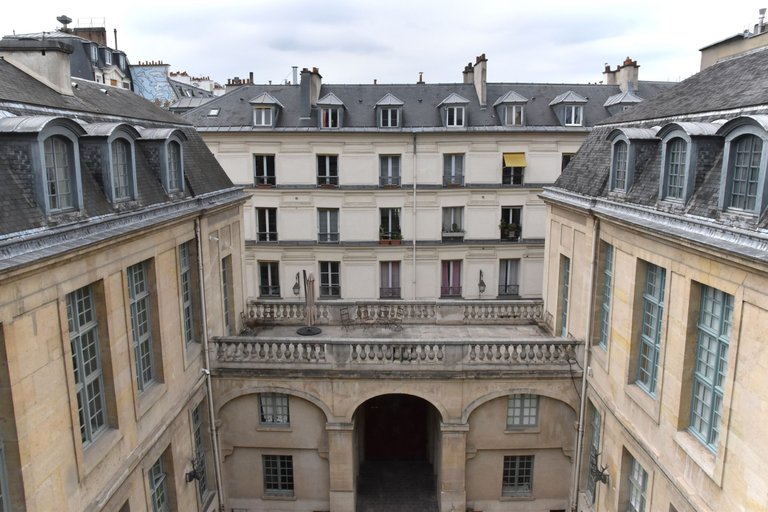
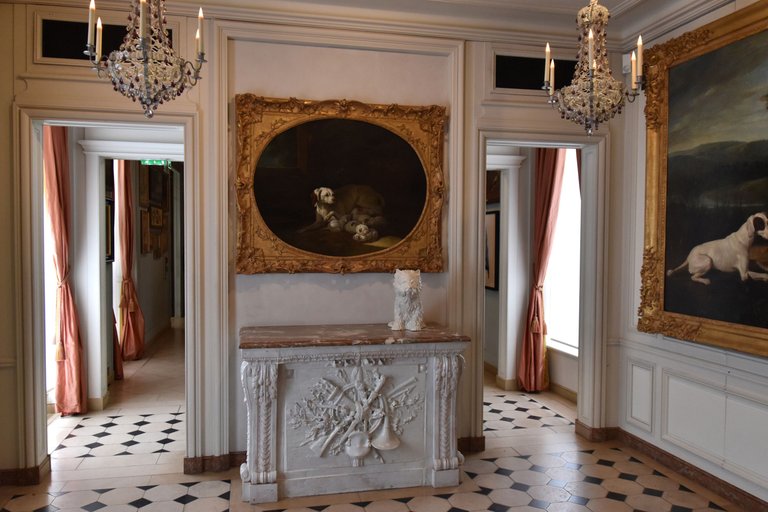
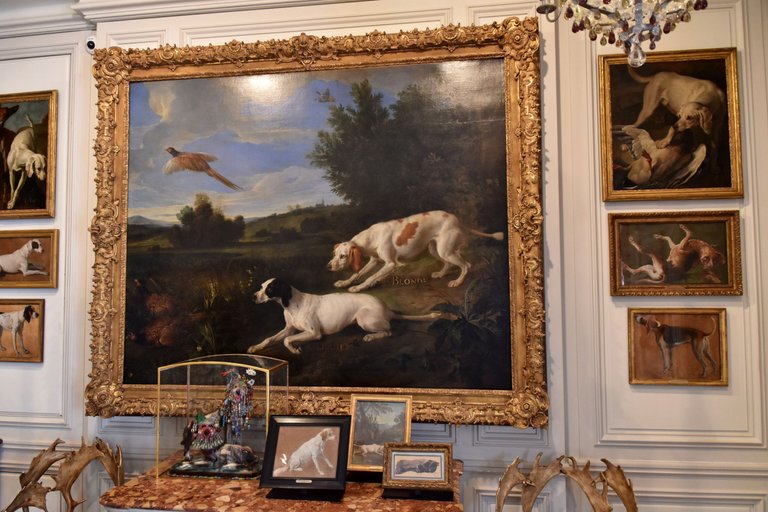
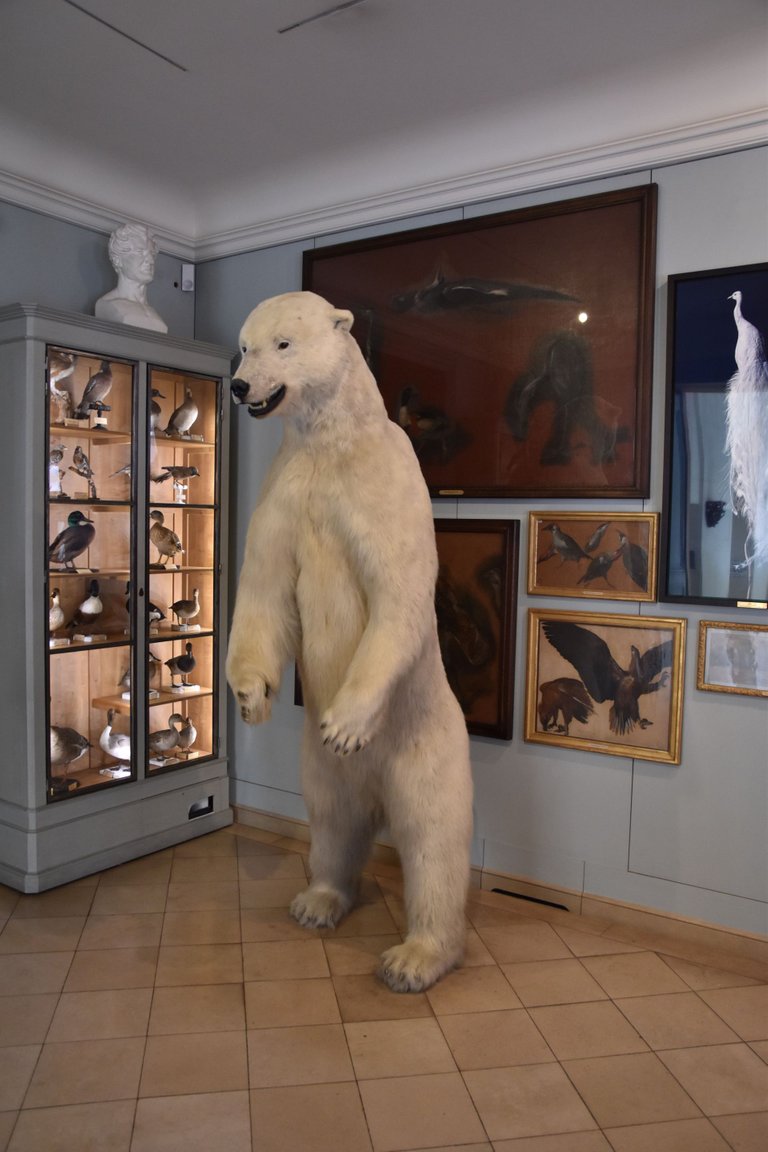
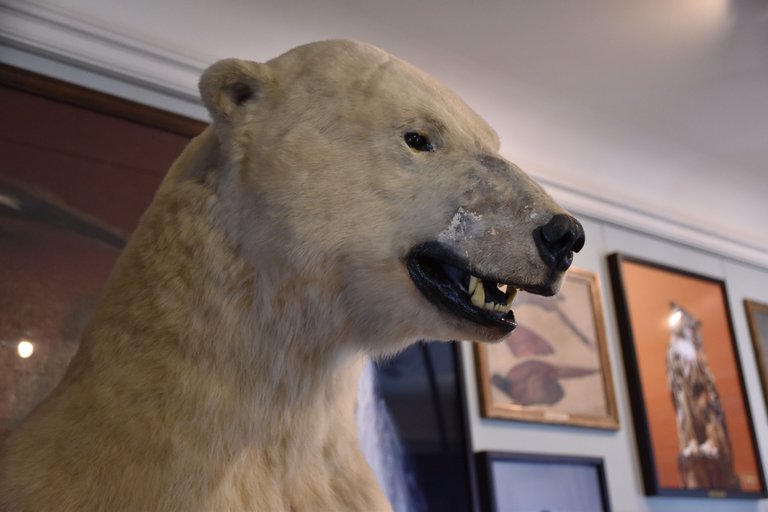
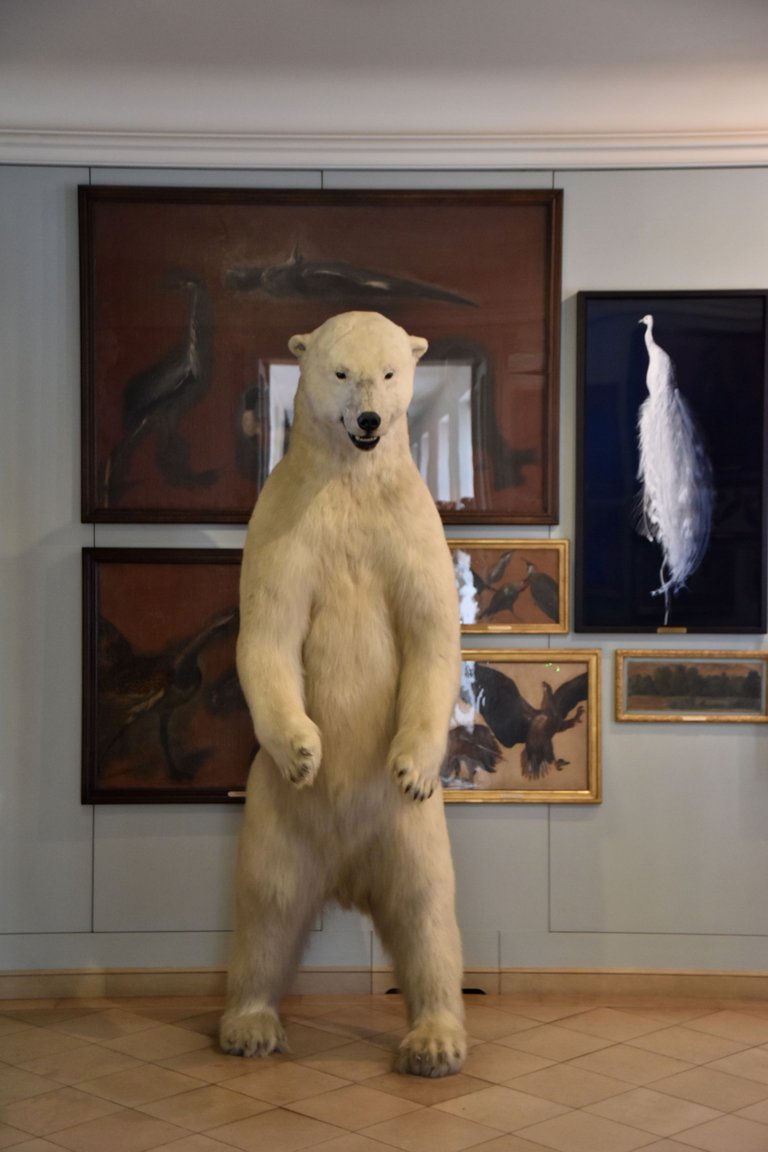
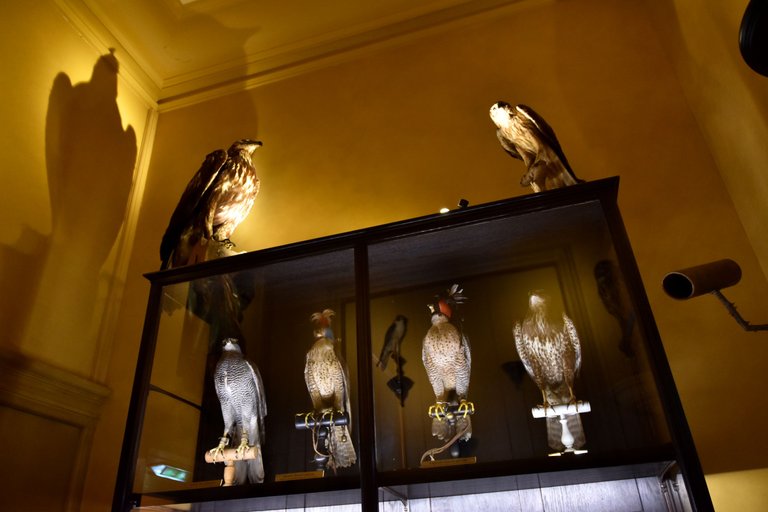
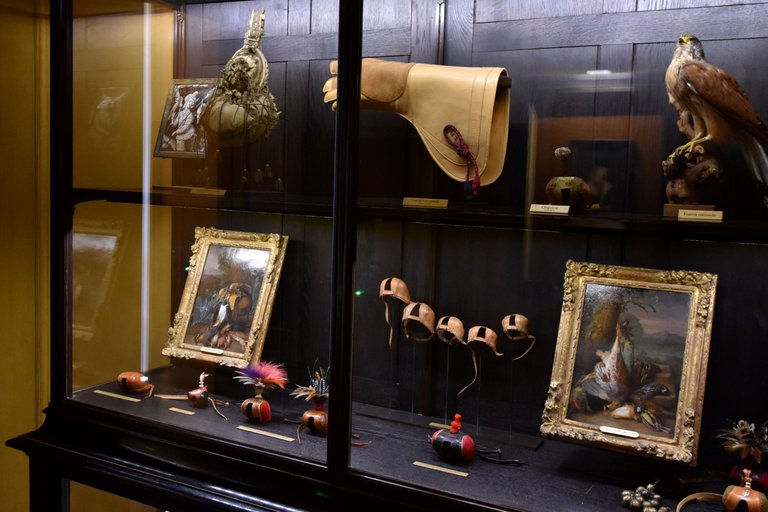
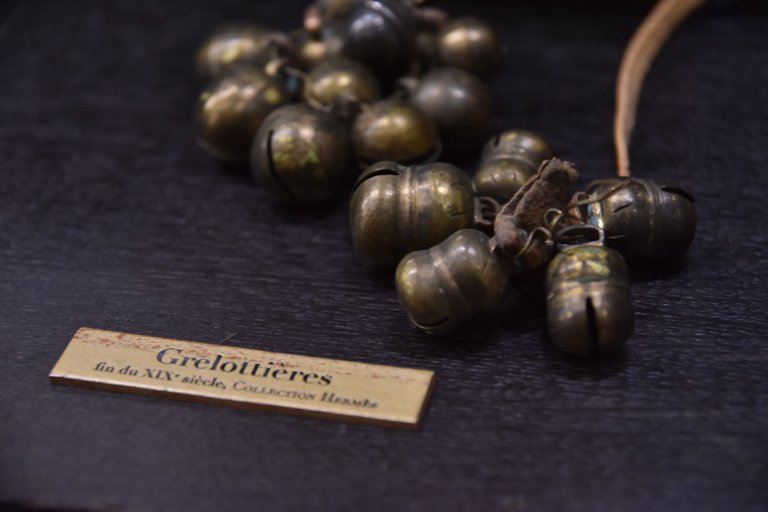
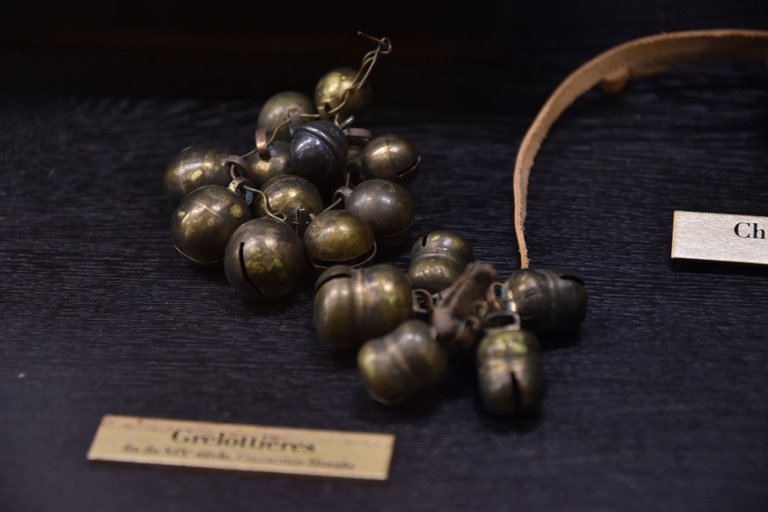
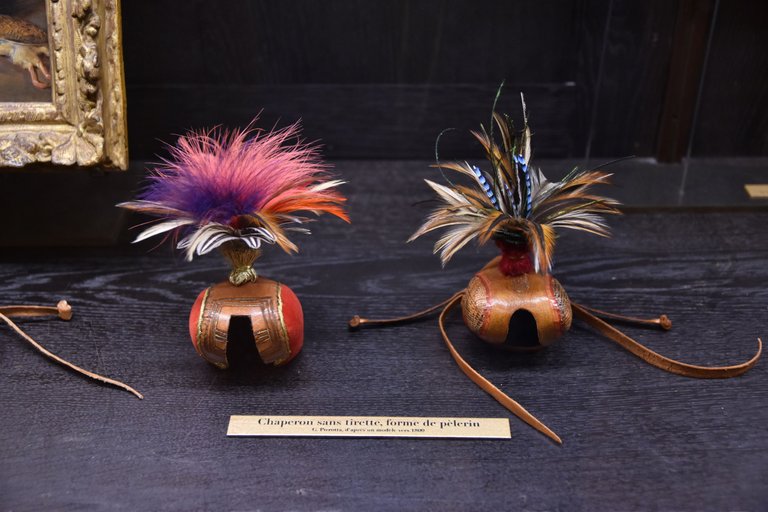
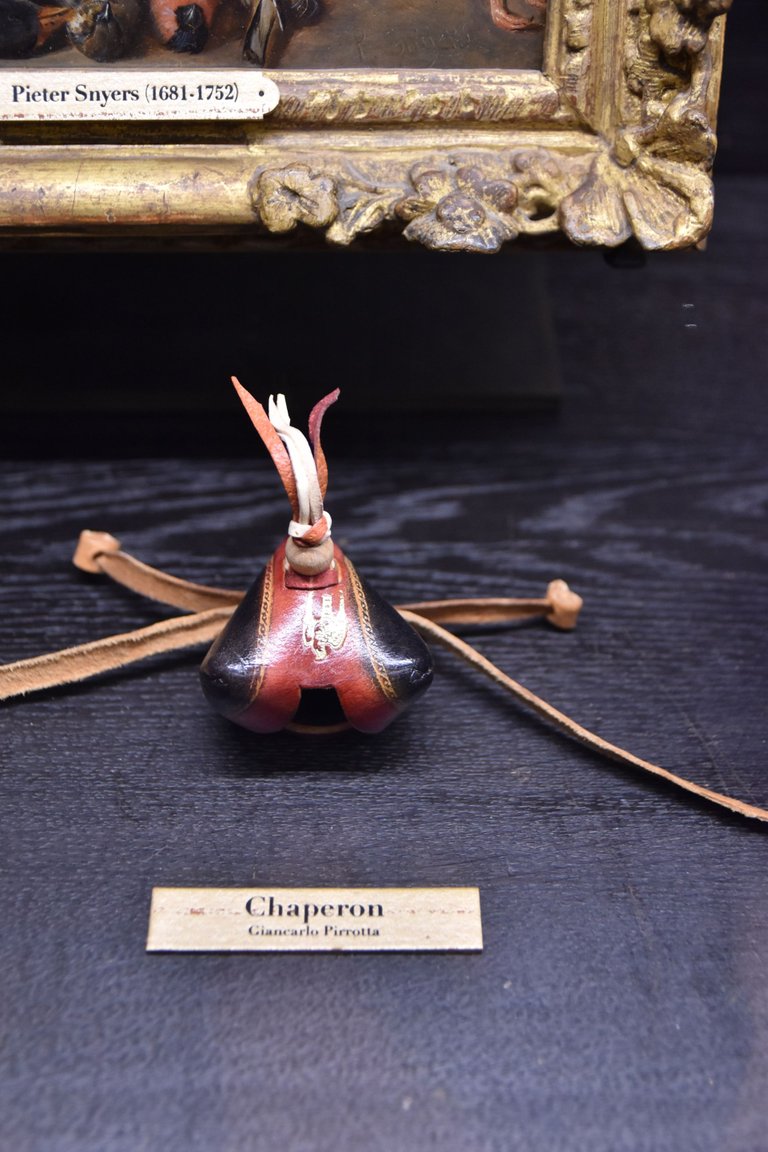
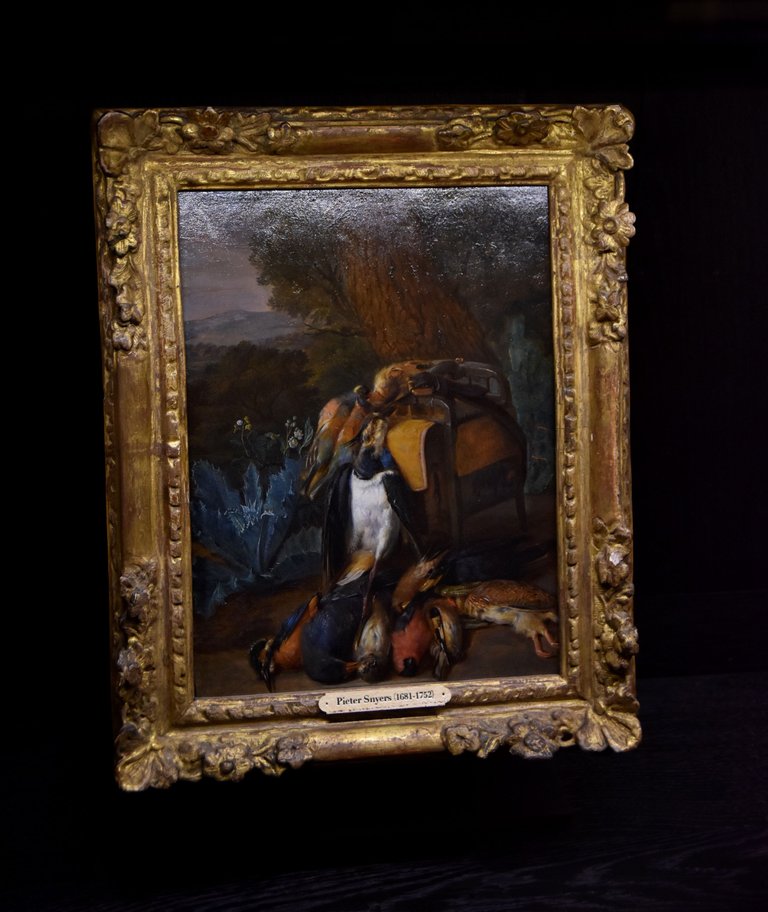
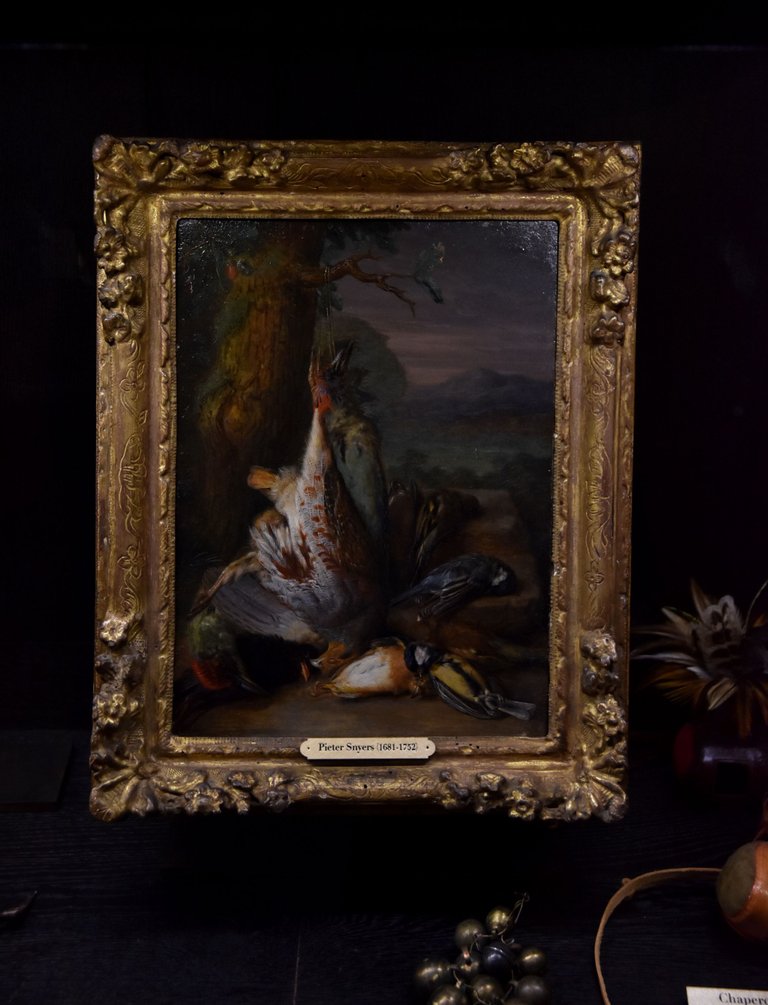
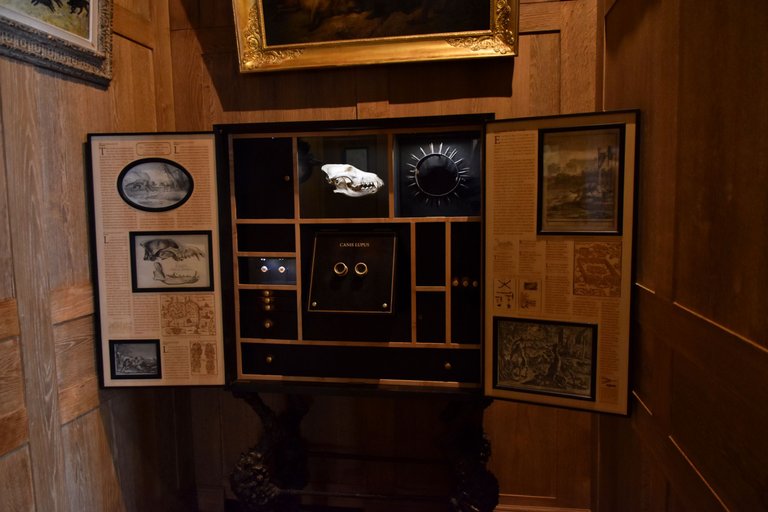
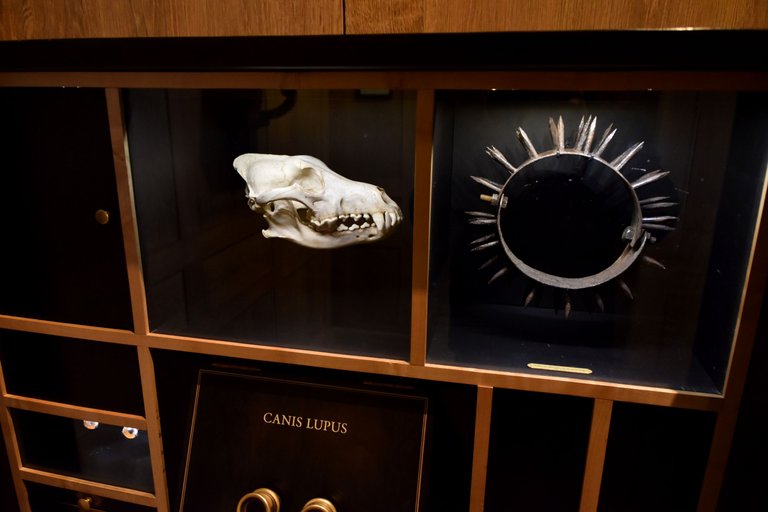
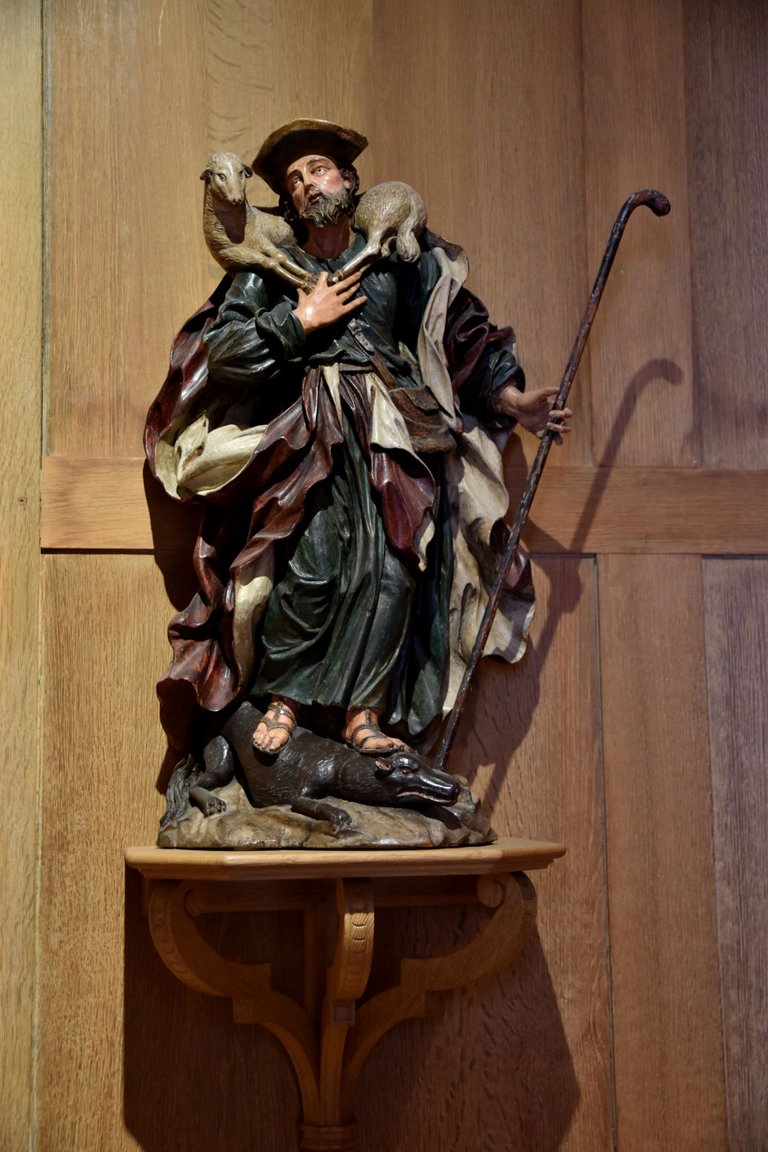
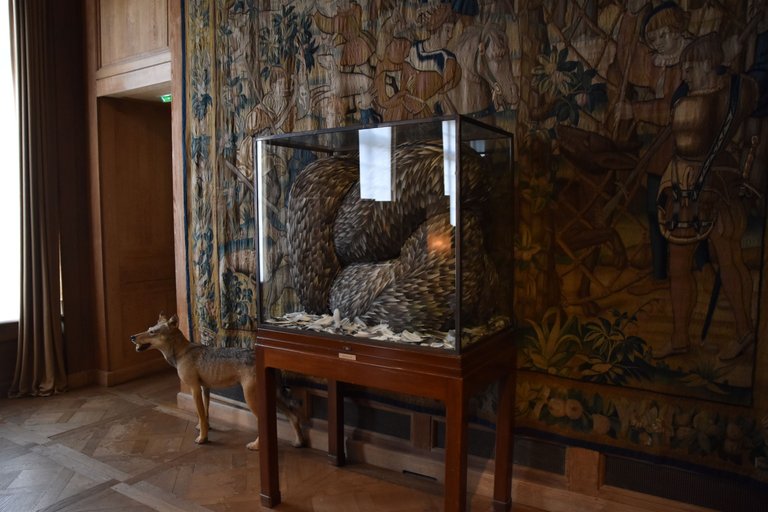
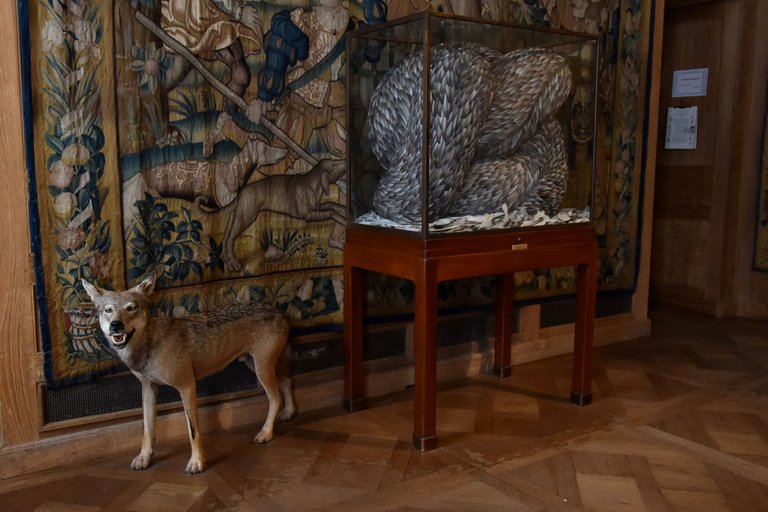
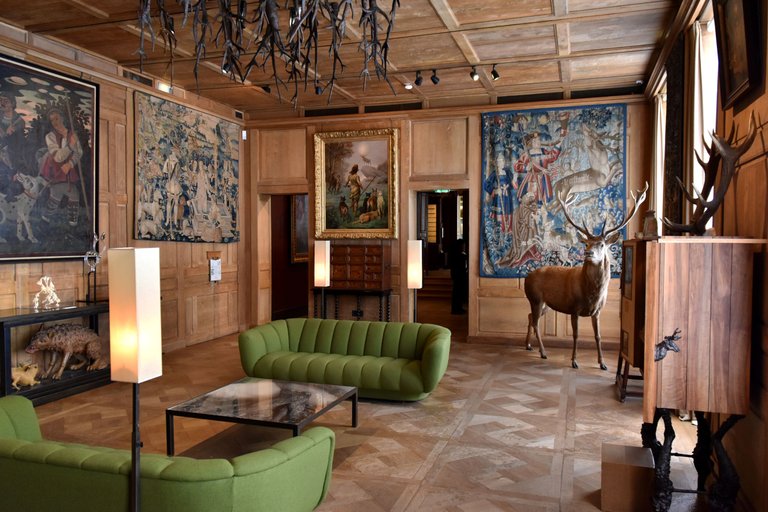

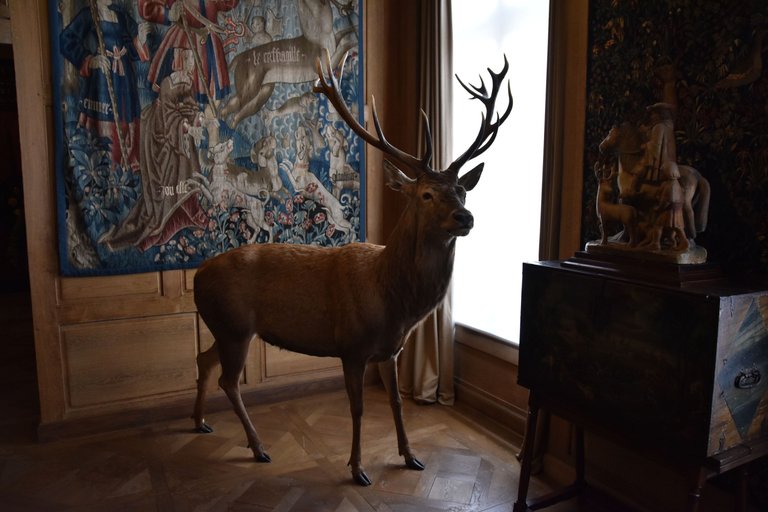
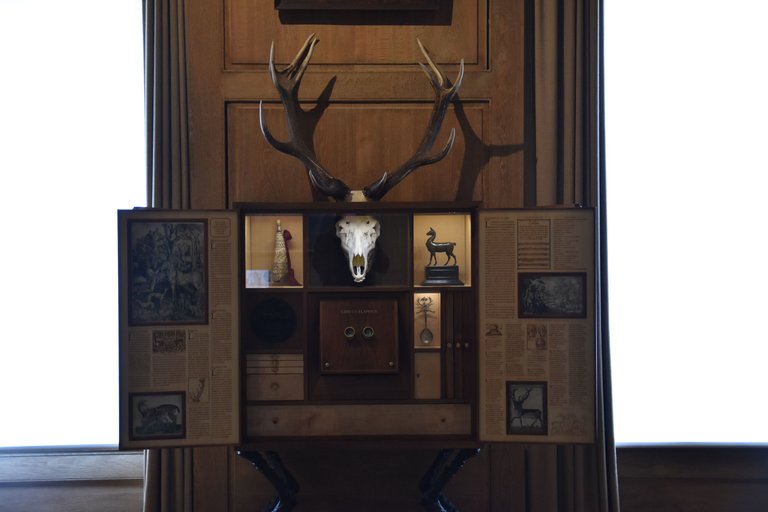

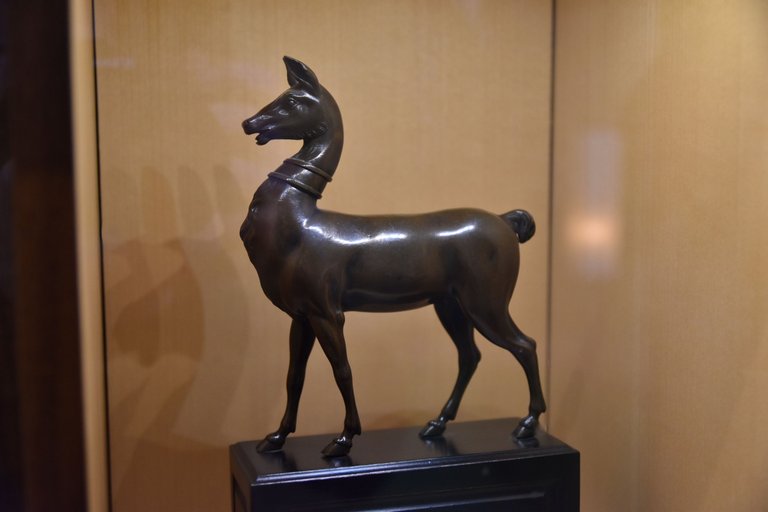
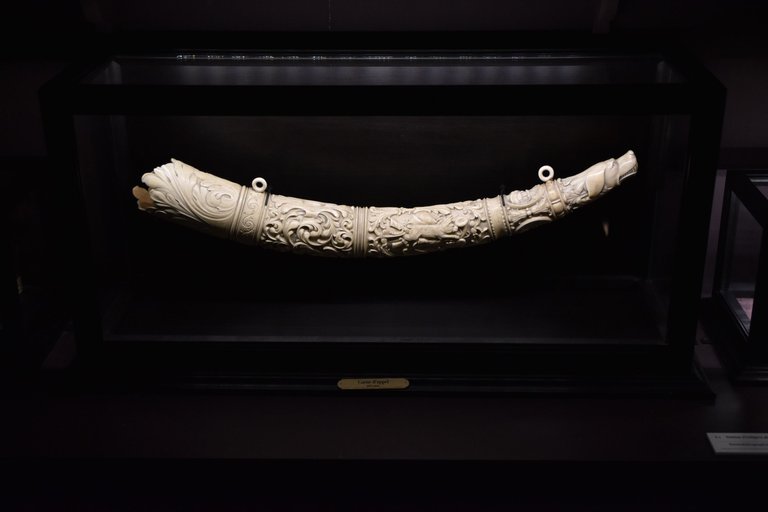

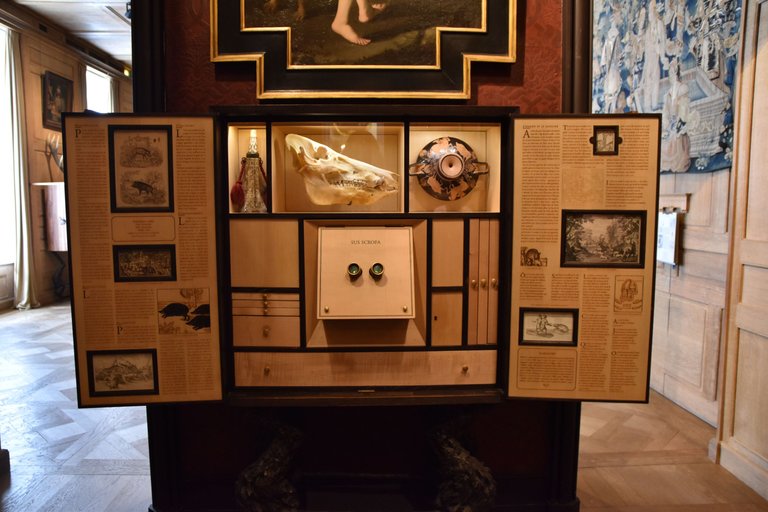
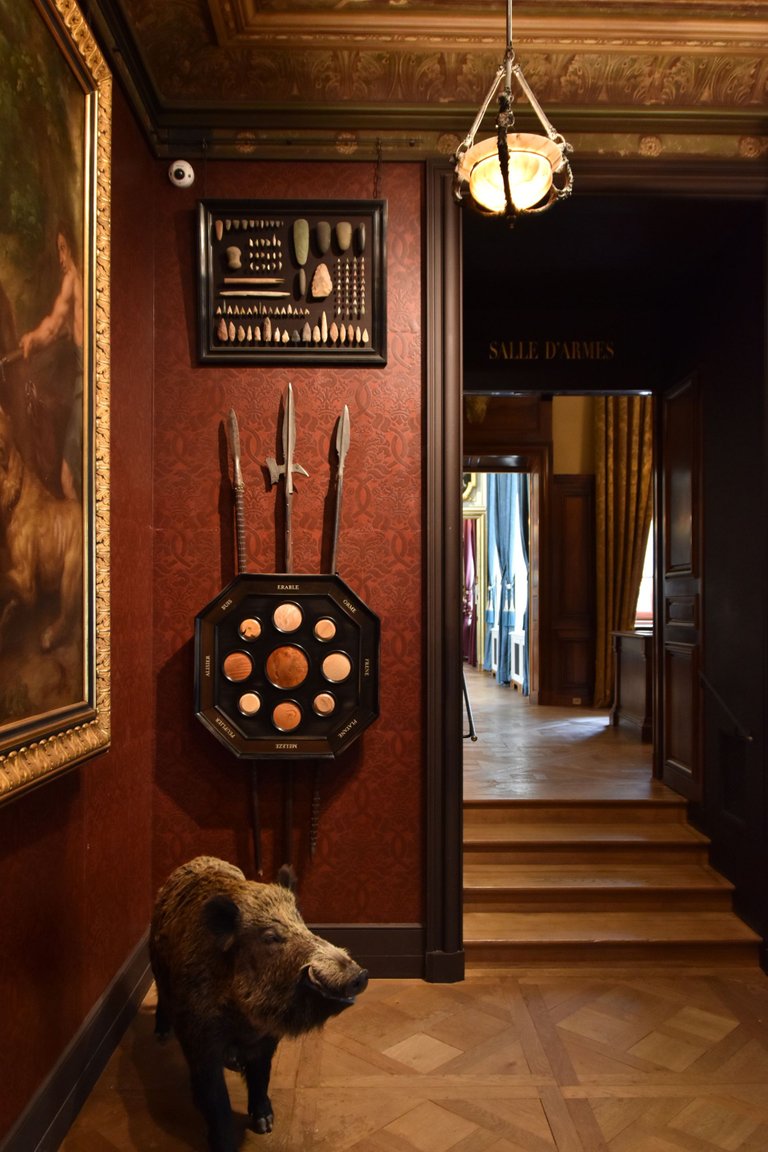
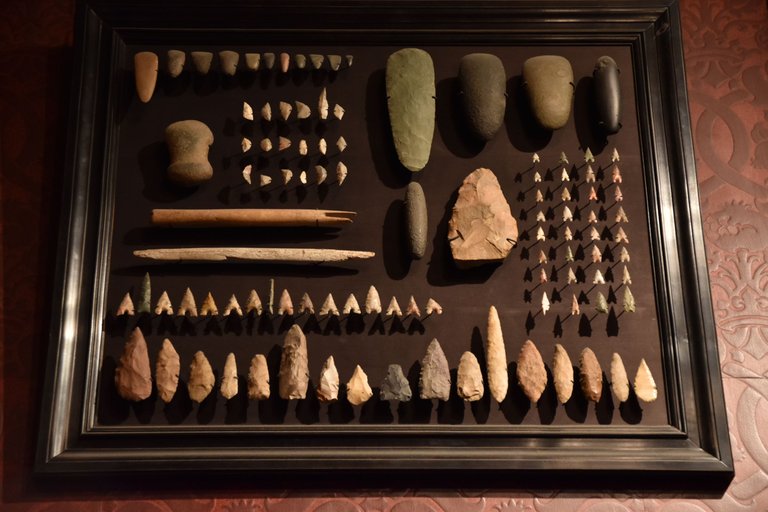
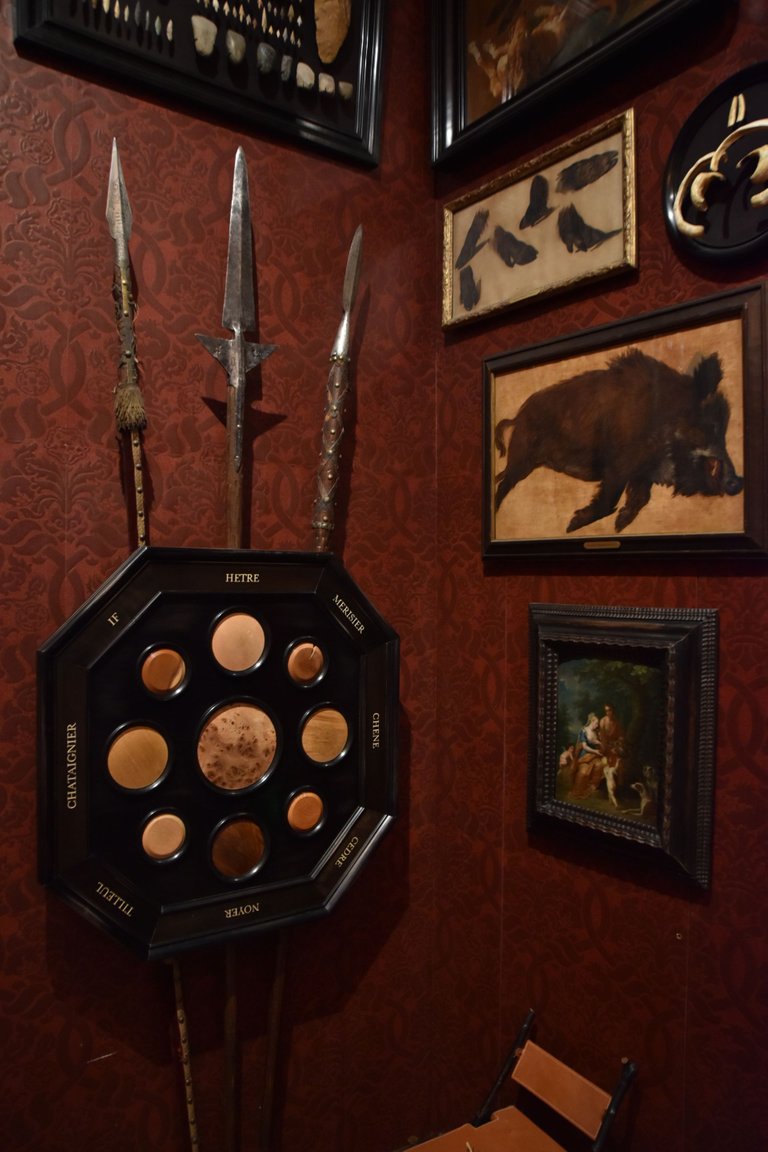
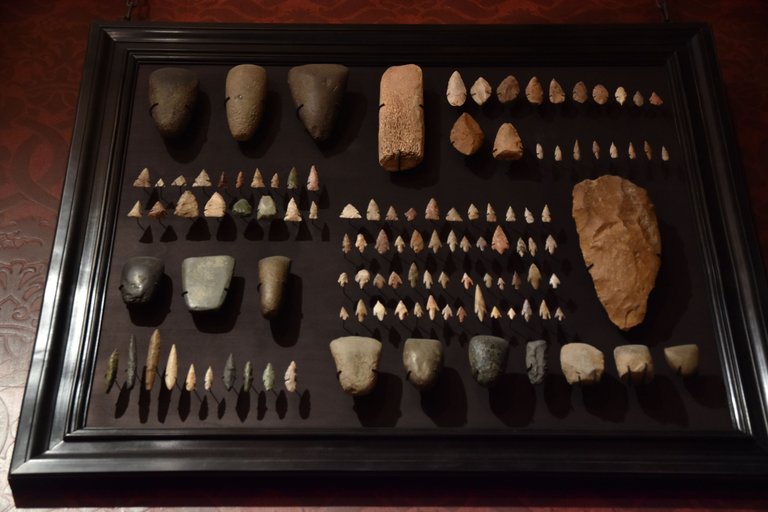
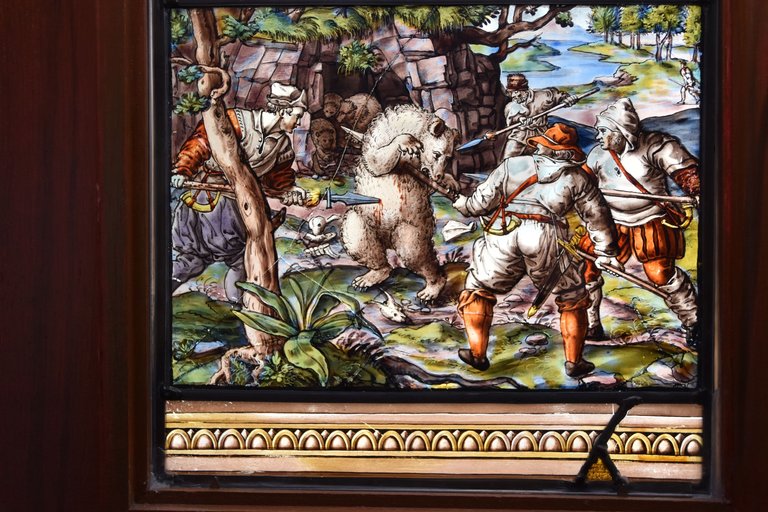
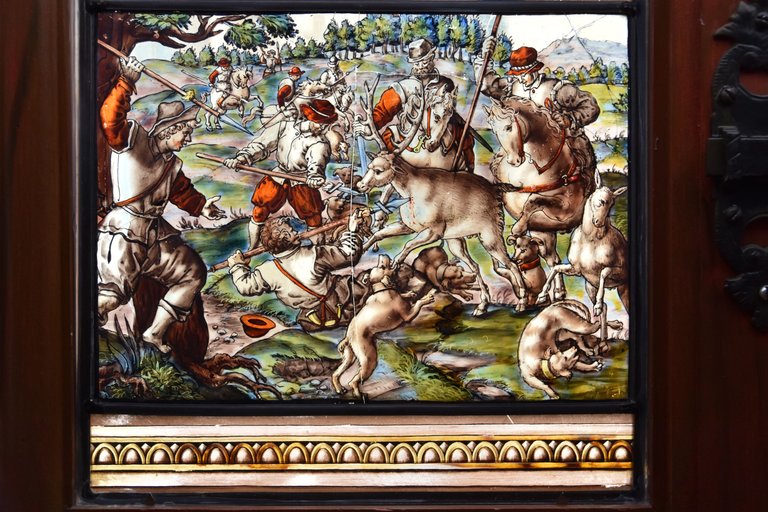
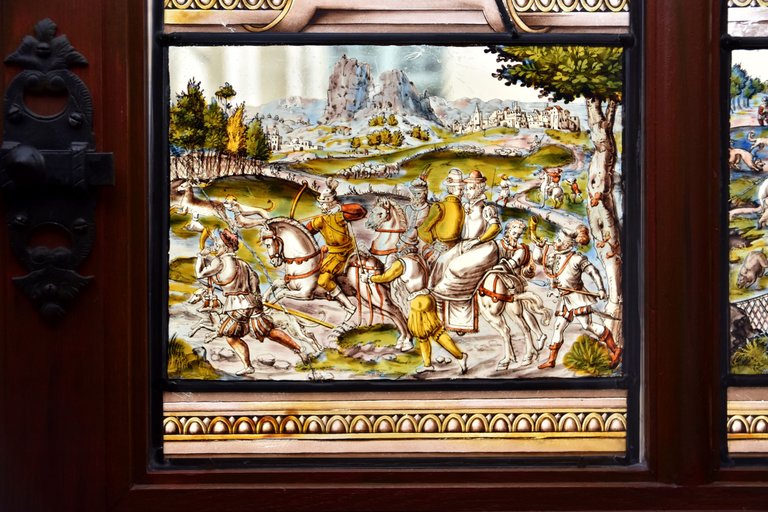
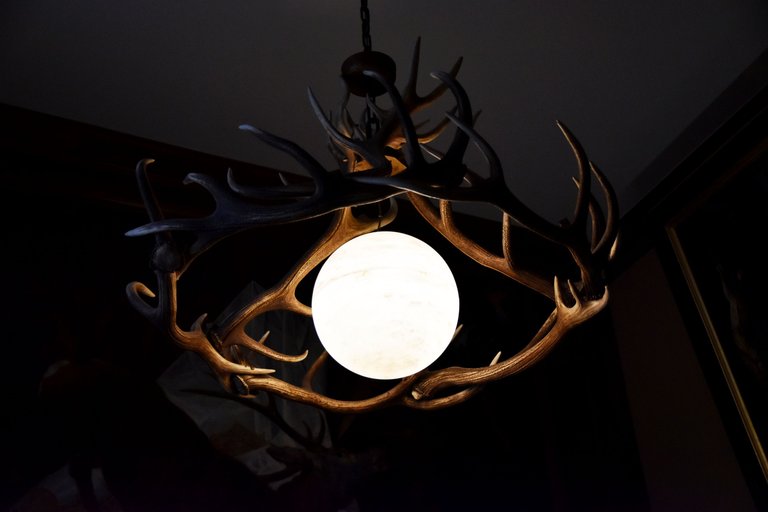
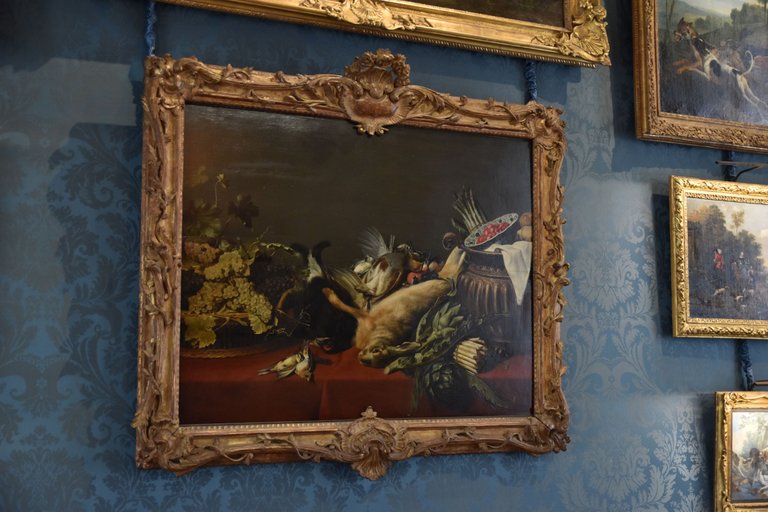
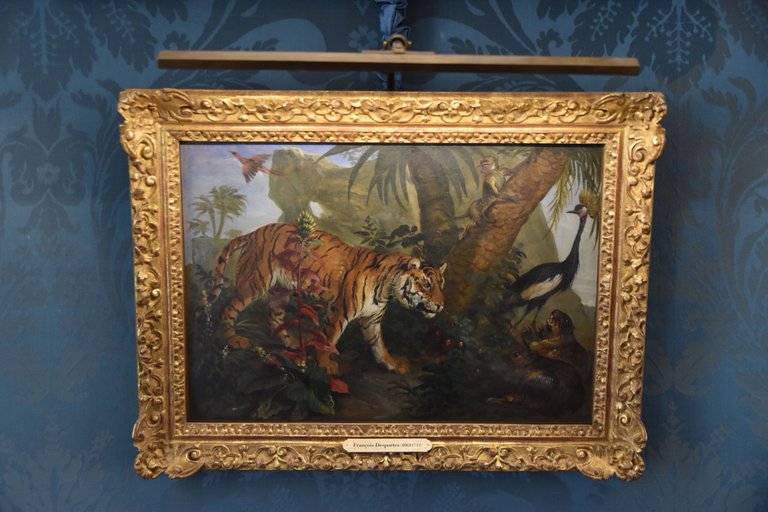
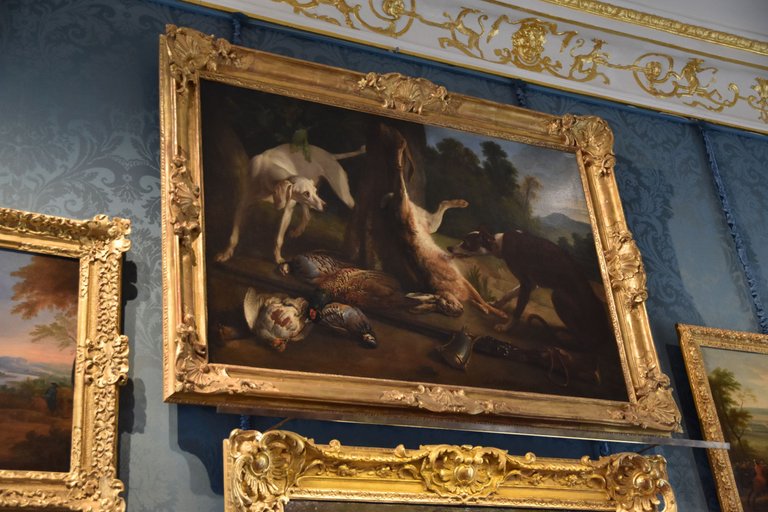
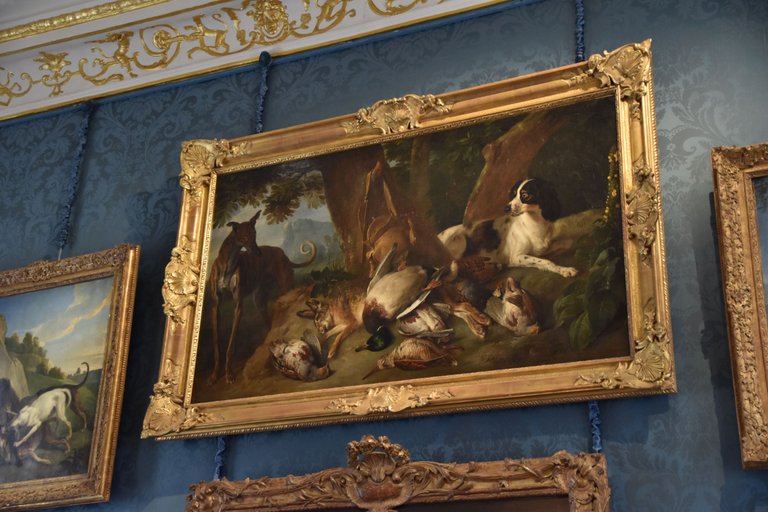
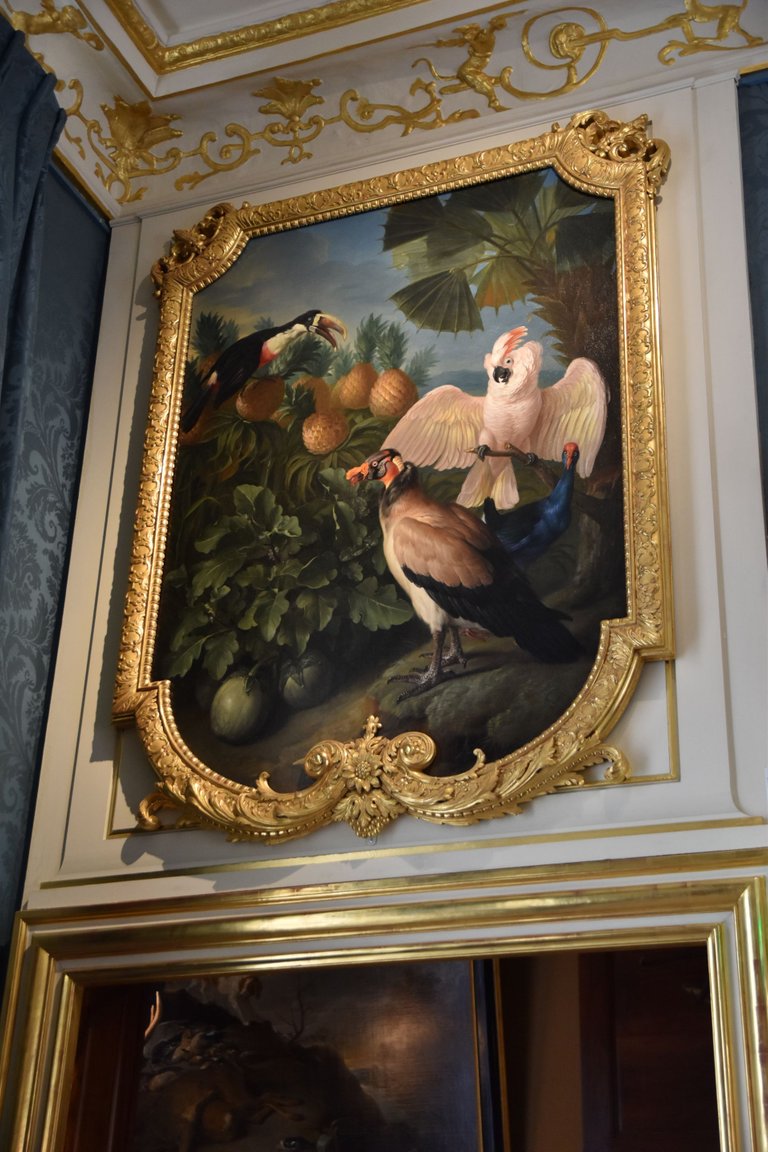
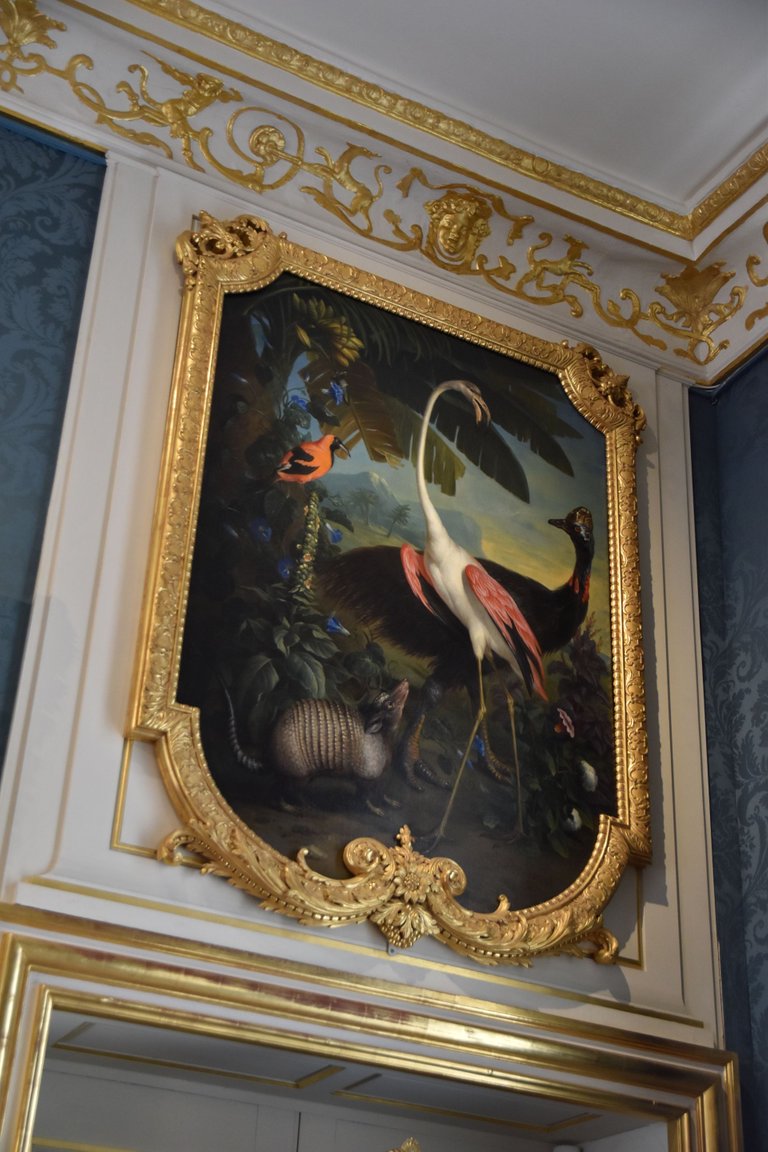
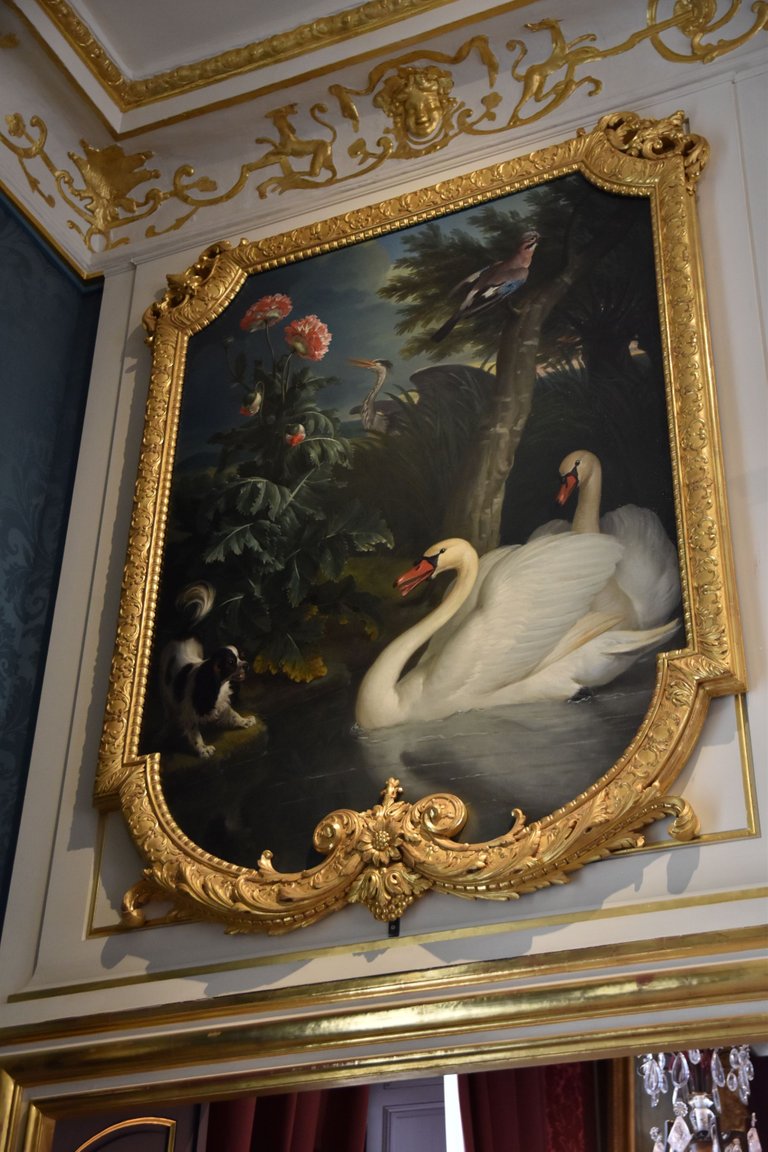
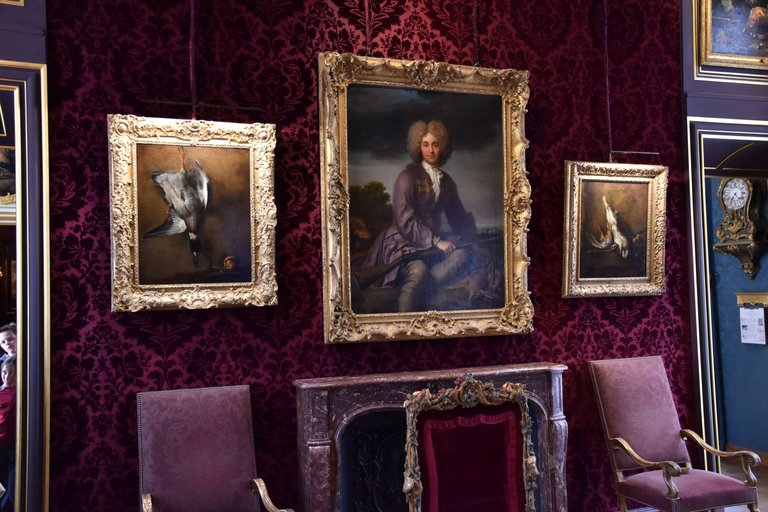
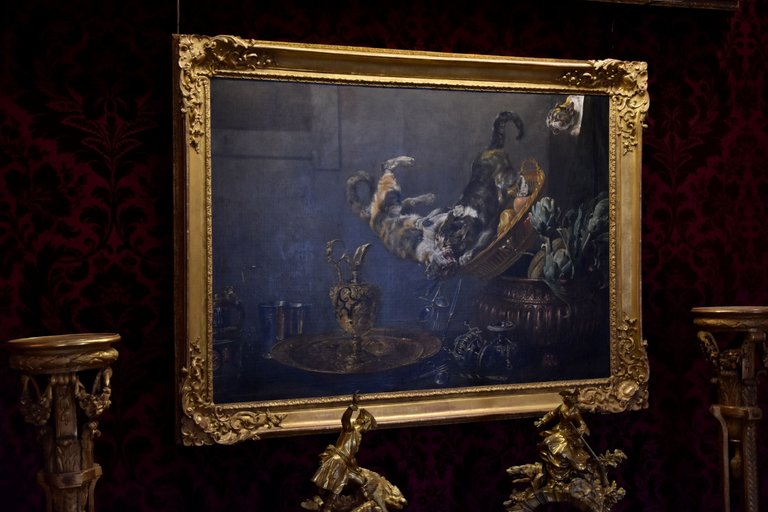
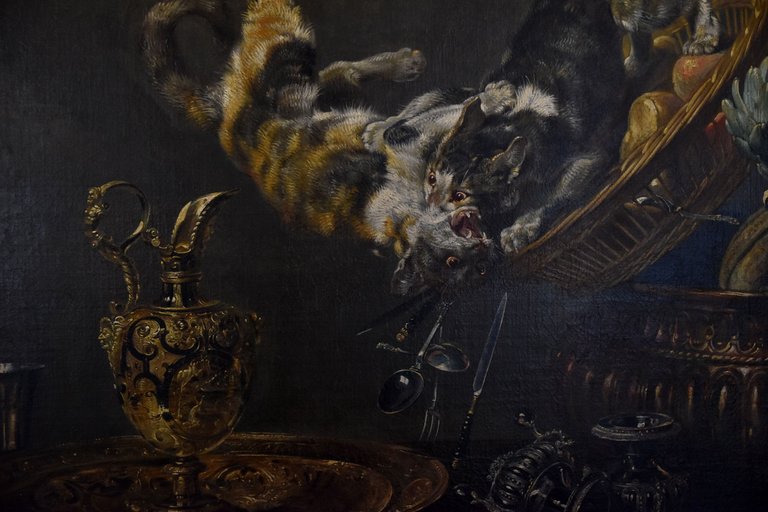
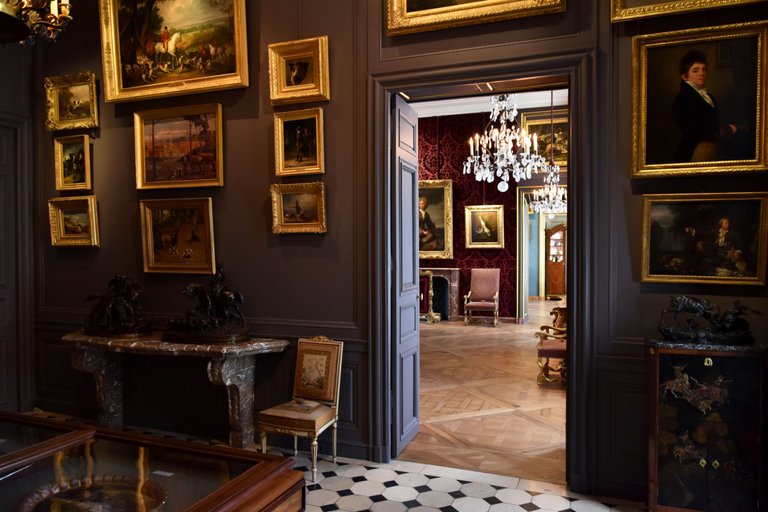
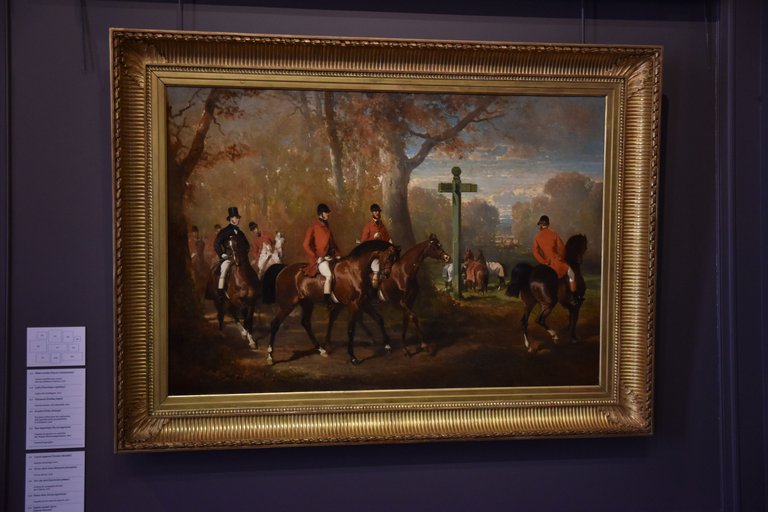
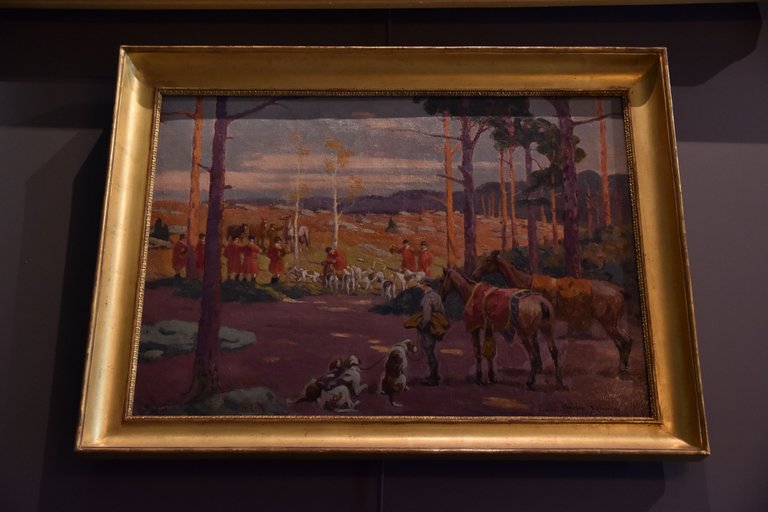

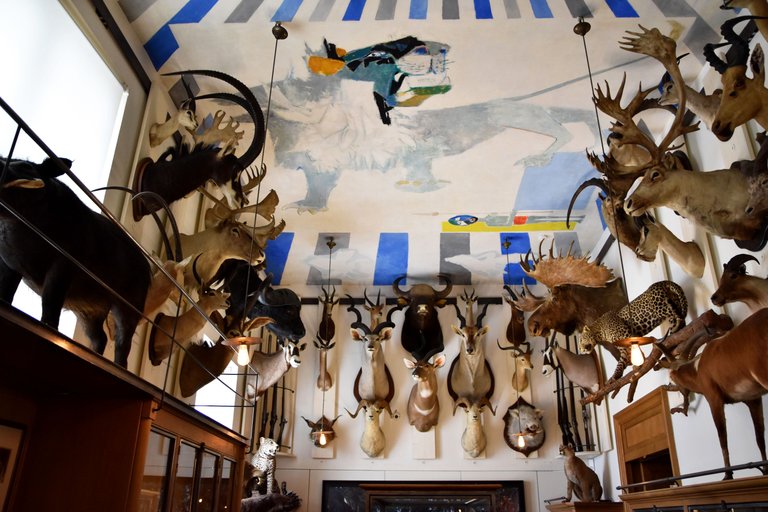
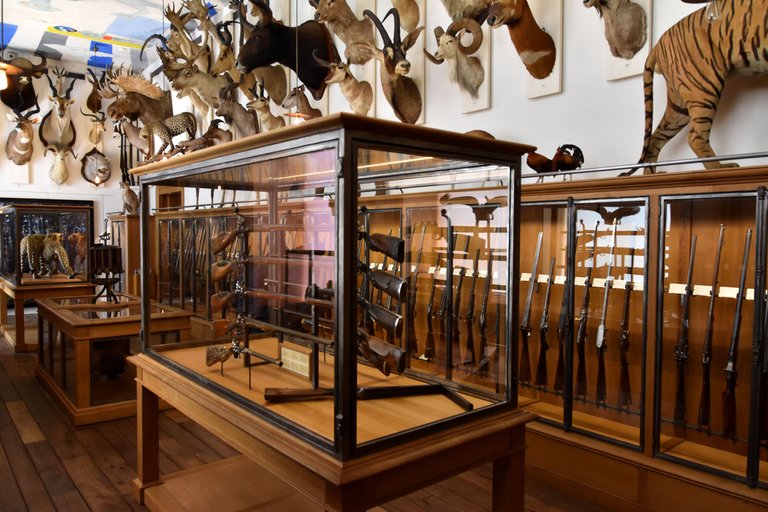
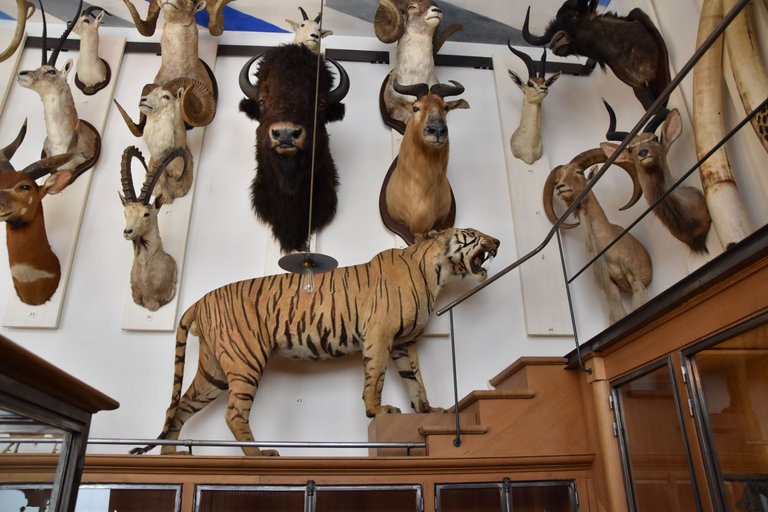
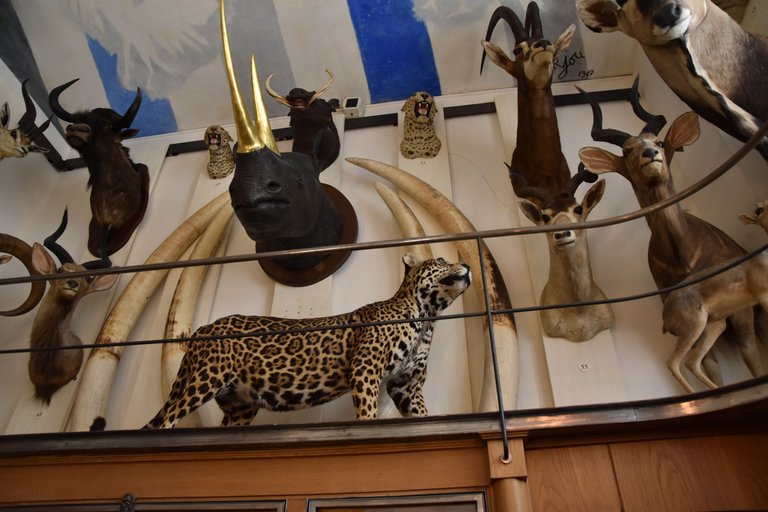
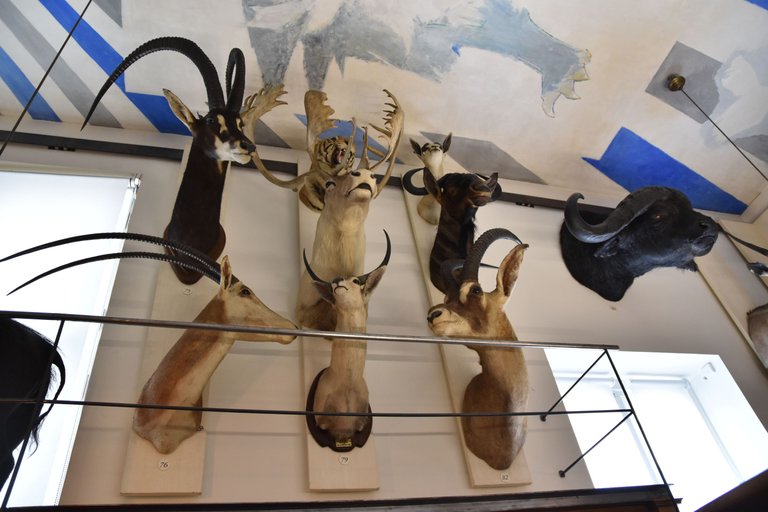
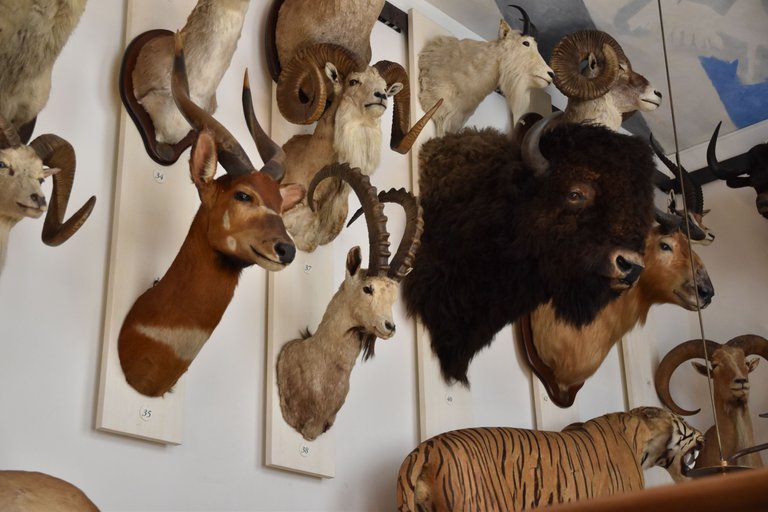
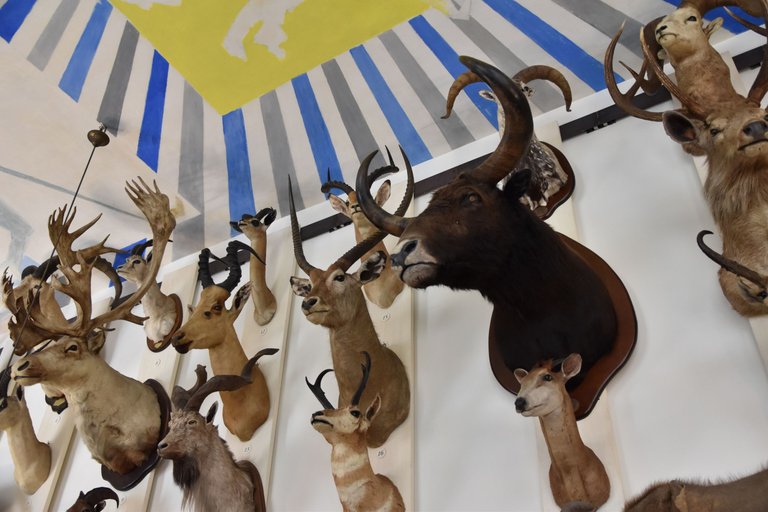
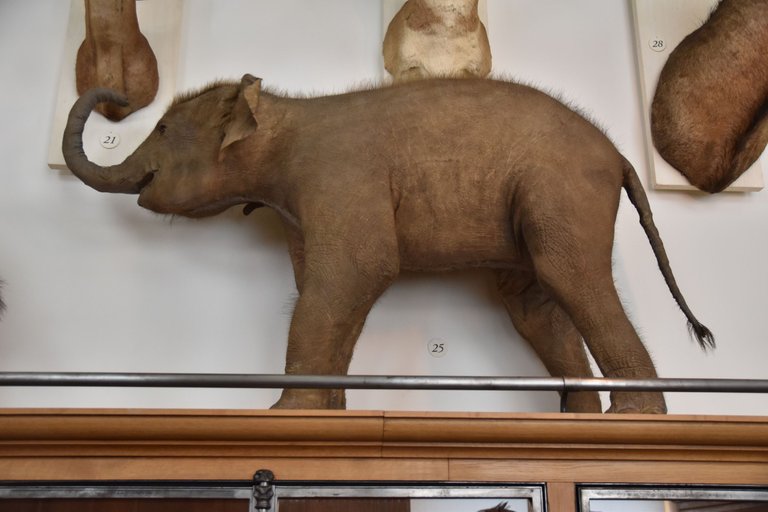
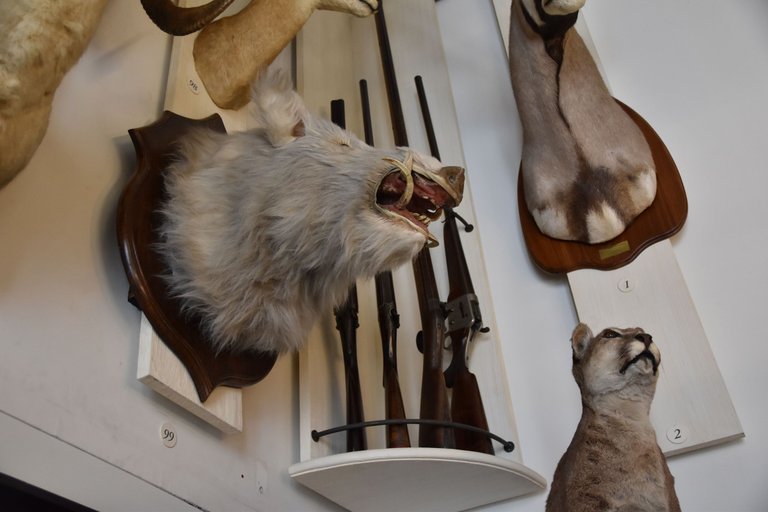
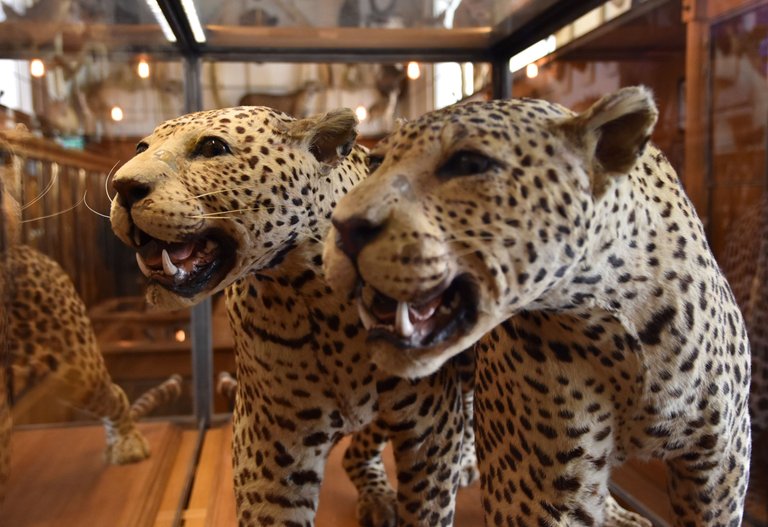
I hope to see the day when hunting remains as a sad thing of our past.
I totally agree to that.
After, I would maybe just include a difference between the hunting games that are lived just like a hobby and hunts that are vital and still practiced, although I believe this is much rarer than the first option !
I live within a community of hunters. hunting is no longer about providing for oneself. it is about domination and superiority. it has become a "sport" with trophy hunting is the goal and many are just finger happy on the trigger.
I am not against hunting as it once was a means to survive.
I see that once again, we are in agreement in our points of view and I am also totally horrified by the fact that this activity, which may have been noble at one time, has become so overused... But I feel that where we go in the country, I will inevitably encounter this type of context and situation!
Best wishes to you this weekend, take good care 🌱
Rural area is where this happens. and it is nearly impossible to control. it comes down to the values of the locals. but having said that, we often get hunters coming from other parts of the country, paying for a post and just do whatever, not having those clear values and tabus of a local.
I know, this is really problematic in every way... When people come from others locations, they don't care at all about what is already there...
Yesterday we went to visit the house one last time before the purchase and I specially asked questions about hunting and hunters. Apparently, it happens more in private woods in the region, and there isn't some close to the house... but we'll see that in real situation !
Take good care dear @bigorna1 :)
Thank you for sharing this. This is a tour of how hunting became a part of history.
You're most welcome, glad you enjoyed the tour 😉 !
Stunningly brilliant @anttn🤗 you had allowed me to go back to the times when herds were abundant in Europe and hunting is an occupation 🌺 it seems that I embark on a journey through your lens and creative words.thank you for sharing.🌺😁
Glad that you liked the tour ! I really look differently the hunts lived as game than a real and vital practice, but in fact, some hunters back in the days was more close to Nature than some hyped-urban people caring about their cat ^^
Take care :)
Thank you !
This post has been manually curated by @bhattg from Indiaunited community. Join us on our Discord Server.
Do you know that you can earn a passive income by delegating to @indiaunited. We share more than 100 % of the curation rewards with the delegators in the form of IUC tokens. HP delegators and IUC token holders also get upto 20% additional vote weight.
Here are some handy links for delegations: 100HP, 250HP, 500HP, 1000HP.
100% of the rewards from this comment goes to the curator for their manual curation efforts. Please encourage the curator @bhattg by upvoting this comment and support the community by voting the posts made by @indiaunited.
Thank you for your support dear @bhattg and @indiaunited :D
✒️ Pour le partage de ces photos et de cette réflexion sur le statut des animaux dans certains lieux muséales , nous vous offrons 💝50 points-fr 💝, un reblogue, un mini-upvote
🎁 Recevez en plus un bonus de 3 points-fr pour votre sélection et ce pourboire : !LUV !GIF animals
💰 Plus de Tokens de 2eme couches vous attendent dans les posts de sélections et de récompenses
Récompense Multi-engagements des Francophones
Via Tenor
Merci pour votre soutien, bonne soirée !
Realistic!
✌️ !
Congratulations, your post has been added to Pinmapple! 🎉🥳🍍
Did you know you have your own profile map?
And every post has their own map too!
Want to have your post on the map too?